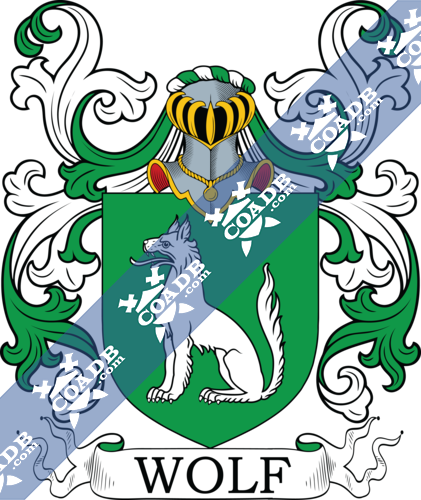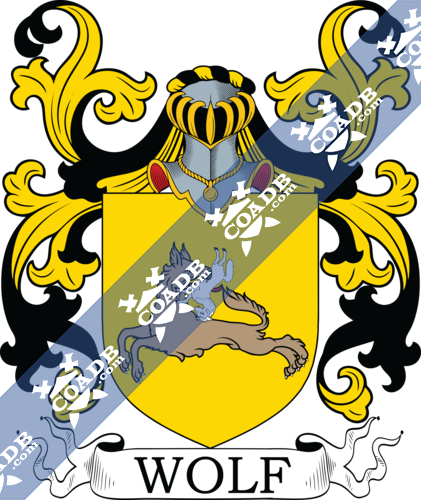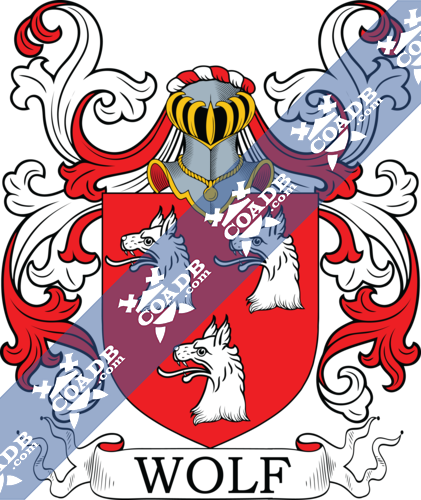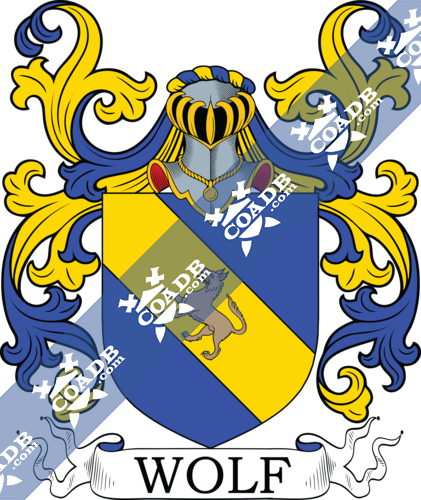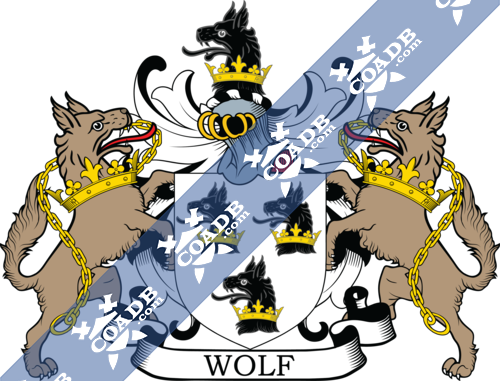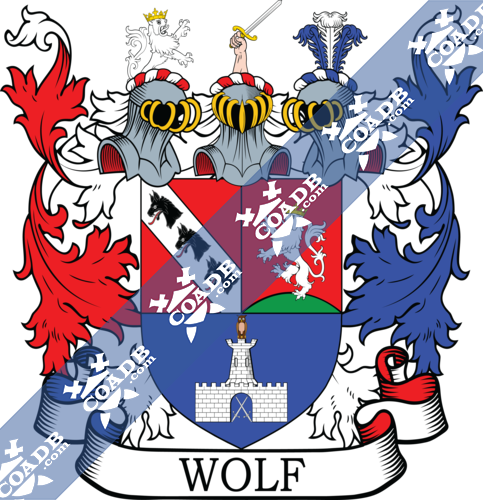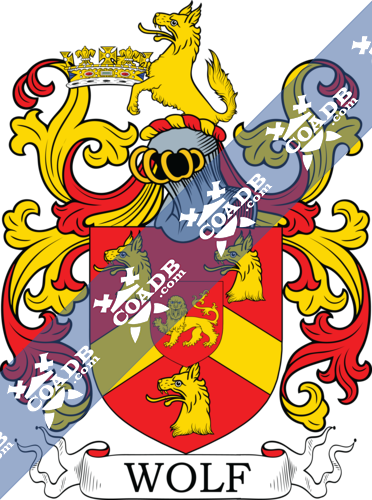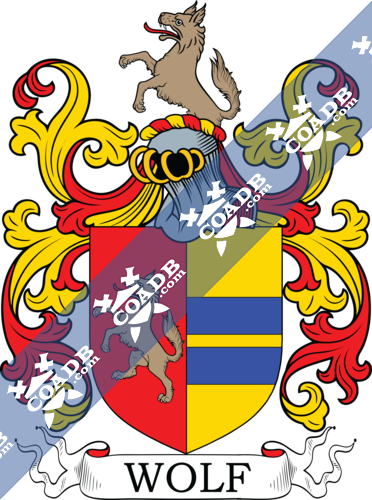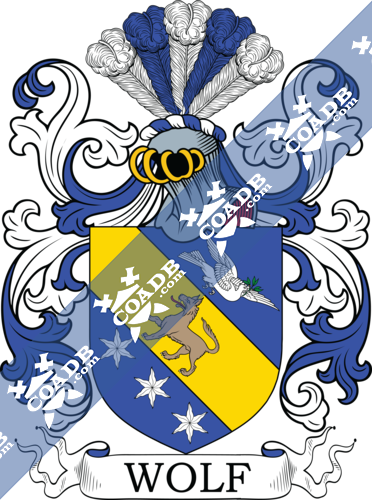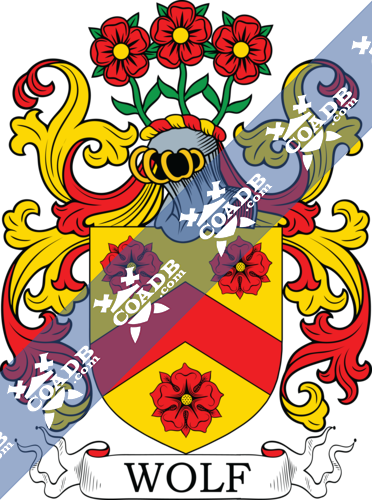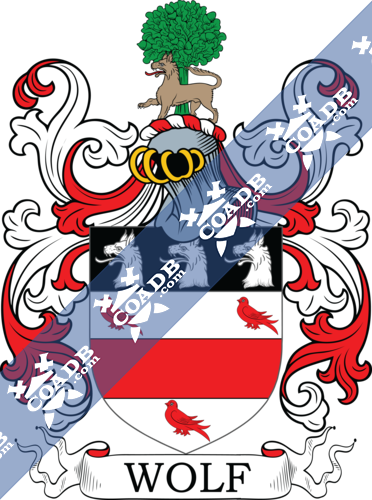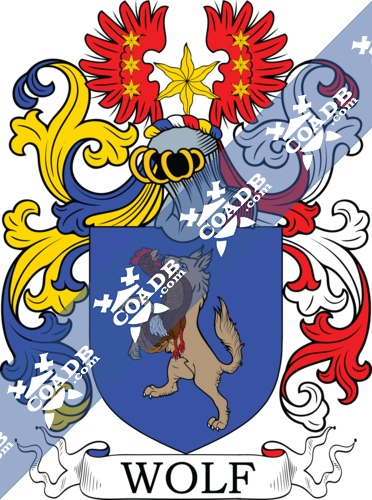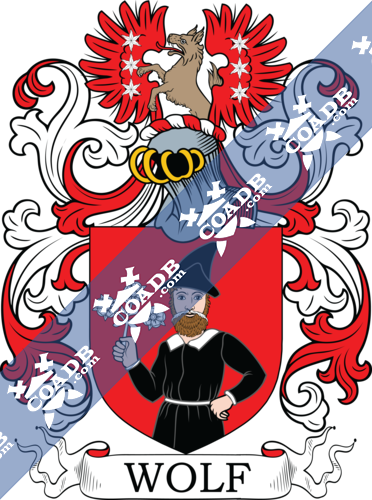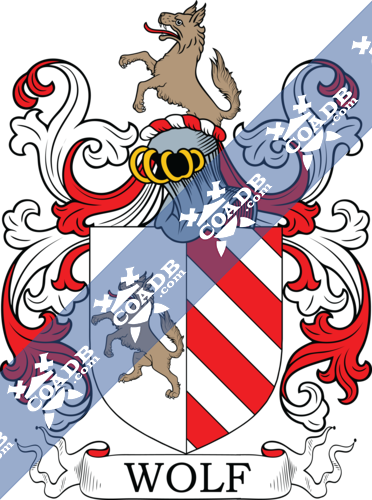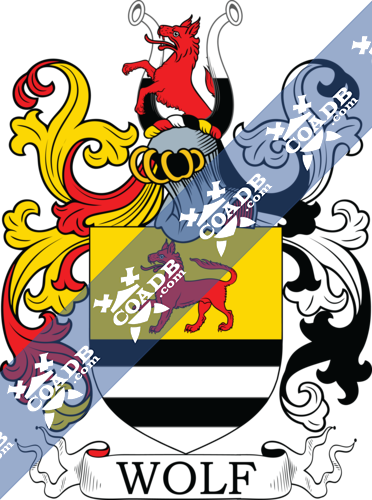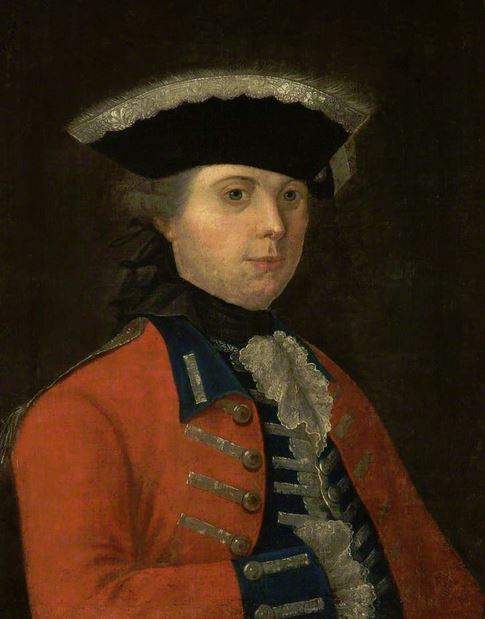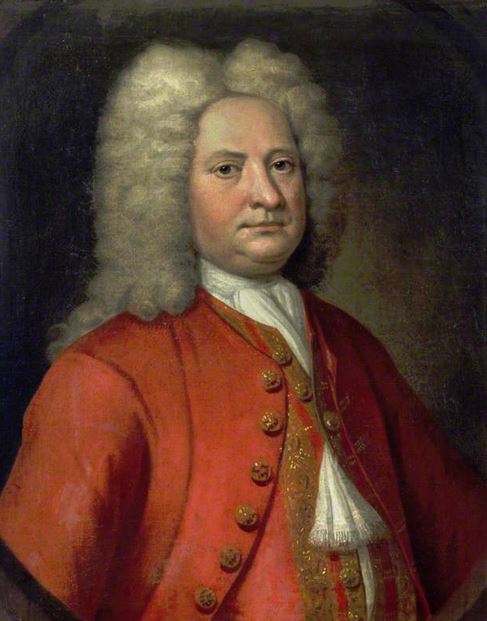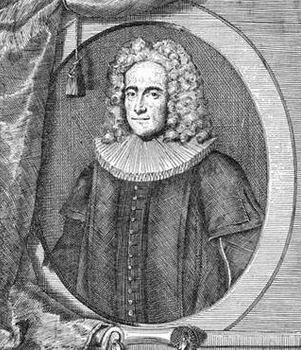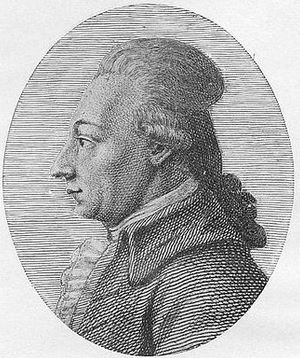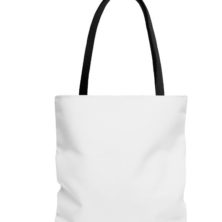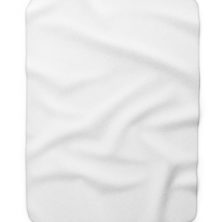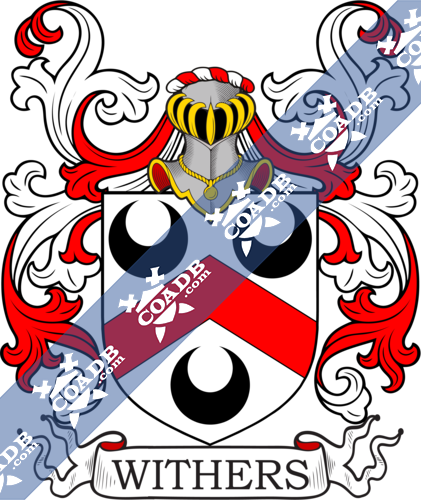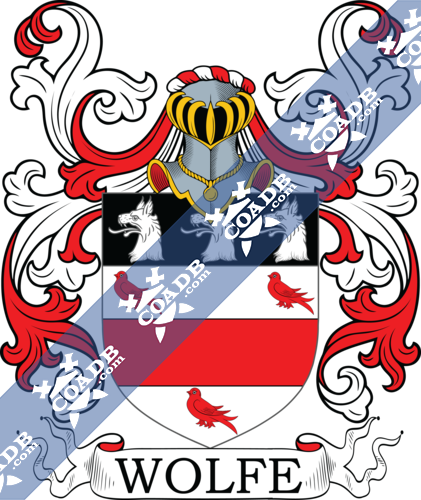Wolf Family Crest, Coat of Arms and Name History
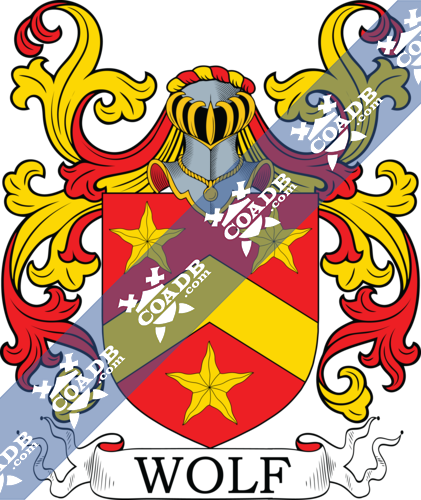
Wolf Coat of Arms Gallery
Don’t know which Coat of Arms is yours?
We can do a genealogical research. Find out the exact history of your family!
Learn MoreSurname Name Meaning, Origin, and Etymology
This surname has three origin theories. First, it is a nickname “the wolf” given to a person who resembles the animal in terms of physical traits or personality characteristics. The animal is a prominent and sacred one in Germanic mythology and was regarded as a sacred beats of Woden (or Odin in Scandinavia, the most prominent god).
Second, it is a baptismal surname meaning “the son of wolf” or “the son of ulf, which is an ancient personal (first) name used throughout Europe including England, Iceland, and Denmark. There are numerous locales throughout the British Isle bearing the root of this nameL: Wolverton, Ulverston, Wolvesey, Wolvercote,, Wolverhampton, Wolferton, and more.
Third, it is a baptismal surname meaning “the song of Wolfgang”, an old Germanic personal name deriving from the Old German word wolf and ganc, meaning battle.
Spelling Variations
Common spelling variants include Wolff, Wolfe, Wulf, Wolfe, Woolf, Woolfe, Wulff, and Woolf. Please run a search for Wolff and Wolfe, as we have separate pages with different coats of arms for those surnames. There are also many other names bearing this name, including: Wolfhound, Wolfhunt, Wolfraven, Wolfson, Woolfso, and Wulfson. In Ireland, it is a varied spelling of Woulfe. Some German uses are Strutwolf (bush wolf), Wolfsdarm (wolf’s belly), Wolfsdrussel (wolf’s gullet), and Wolfshirn (wolf’s brain).
Popularity & Geographic Distribution
The last name ranks 427th in the United States according to the 2000 Census. The variant Wolff is ranked 1,543rd and Wolfe is ranked 337th. The name is most common in New York, Pennsylvania, the Midwest, and California. The name also has notable density in Austria, Germany, France, and Brazil.
Early Bearers of the Surname
A one Ulf, son of Tur-ulf was present at the foundation of St. Mary’s Priory in Lancaster. A one Ulf married the sister of Canute (King of Denmark, England, and Norway, known as the North Sea Empire, who was called called King Cnut The Great, who reigned from 1016-1035 AD) and was the third Bishop of Dorchester. The Pipe Rolls of Cumberland, Westmoreland, and Durham (also called the Sheriff’s Annuial Accounts) records Ulf de Appelbi in 1163 and Ulf Strodhyrda in 1196 AD.
The Pipe Rolls of Lincoln in 1166 AD list one Robert Wulf. The Hundred Rolls of 1273 AD, a census of Wales and England, known in Latin as Rotuli Hundredorum, documents three people bearing this surname: John le Wlf in Sussex, Agnes le Wolf in county Huntingdonshire, and Emma le Wolf in Bedfordshire. The Poll Tax of Yorkshire in 1379 lists Magota Wlfe. The Register of the University of Oxford of 1586 records one Thomas Wolphe (or Wulph) in county Wiltshire. The Rolls of Parliament document the existence of Adam le Wolf, as well as Philip le Wolf in 1306 AD. Roger Ulfe and William filus Ulfe were recorded in 1250 AD in the Cartularium Abbathiae de Whiteby.
A one Nivelung Wolf was recorded in 1135 AD (in Cologne? Or he was a Colonel?). A one Ortlod der Wolf was documented as living in around 1300 AD.
History, Genealogy, and Ancestry
One source claims the family Wolf was first found in the Rhineland and in the 1200s it spread throughout Germany and later came to England during the Norman Invasion of 1066 AD. A one Elbel Wolf of Bruen, Moravia was documented as in 1365 AD.
The name Wolfe was first established in Cheshire and they descended from Hugh Lupus, Earl of Chester. The word lupus is Latin meaning wolf.
The famous genealogist Bernard Burke’s book “The Landed Gentry” discusses two branches of this family: Wolfe of Woodhall and Wolfe of Forenaghts. The first begins with a mention of Thomas Birch-Wolfe, Esq. of Wood Hall in county Essex, who married Eliza Vernon, daughter of Reverend Richard Birch, in 1831.
The second is a lengthier discussion and begins with a mention of Richard Wolfe, Esq. of Forenaghts and Bishopland in county Kildare, who was a 2nd Lieutenant of the 3rd Royal Scots Grey. He was born in 1855 and succeeded his father in 1872. Burke states this family is of great antiquity and names several prominent members of this branch, including Major General James Wolfe, the hero of Quebec, Arthur Wolf, the Viscount Kilwarden, and the Reverend Charles Wolfe, a poetic genius. John Wolfe, Esq. of Baronrath, was son of Richard Wolfe, and was appointed a Commissioner by King William III of England. In 1668, he married Mary Cooper, widow of Thomas Colclough. He died in 1715 and left behind a son named Richard who was born in 1673. In 1669, Richard married Lydia, daughter of Patrick Page and Mary Sandys, and had children with her: John, Thomas (of Blackhall born 1705 and married Margaret Lombard), Theobald (born 1710, Barrister-at-Law, who married Elizabeth Dobbs), and Richard (of Baronrath, born 1712 and married Alicia Standish). He died in 1732 and was succeeded by his eldest son John. John was born in 1700 and in 1725, he married Mary, daughter of William Phillpott and had issue with her: Philpott and Arthur (Lord Kilwarden born in 1738). He died in 1760 and was succeeded by his son Philpott Wolfe, Esq. of Forenaughts, born in 1723 who married Mary, daughter of Thomas Burgh, in 1753. He left a son and successor named John, born 1754, who was Colonel in the Kildare Militia. In 1777, he married Charlotte, daughter of Theobald Wolfe, and had issue with her: John (1778), Arthur (1786), and Richard. He died in 1816 and was succeeded by his only surviving son, Reverend Richard Wolfe. He was born in 1787 and in 1831, he married Lady Charlotte Sophia Hutchinson, sister of John, 2nd Earl of Donoghmore, and he died without issue. He was succeeded by his relative Theobald George Samuel Wolfe, Esq. of Forenaghts and Bishopland. He was born in 1815 and in 1852 he married Henrietta Elizabeth, daughter of Henry Moreland Ball. He had issue: Richard, George (1859), and Elizabeth. This family bore the following coat of arms: Argent, three wolf’s heads erased sable ducally gorged or, with crest: A wolf’s head sable ducally gorged or.
A one Edward Wolfe was born in 1615 in England. He married Margaret Southerne and together they had a son named Edward, born in 1685, who became a Lieutenant General. In 1723, he married Henrietta Thompson and had three people with her: Edmund, James, and Edward. His son James, born in 1727 in Westerham, Kent, became a Major General. He died in 1759 in Quebec. The son Edmund was born in 1720 and had a daughter named Frances (Cornwell).
A one William Washington Wolf was born in 1830 in Indiana. In 1857, he married Naomi Pulliman and they had numerous issue together: Jasper, Arizona (Kirkpatrick), John M., Ulysses S.G., Nancy Lavina (Becker), William B. and Neoma (George).
A one Johann Claus Wolf was born in Spock, Karlsruhe, Germany in 1619. He married Martha Seger and together they had a son named Johann Conrad. Johann was born in 1648. He married Anna Eva and they had a daughter named Anna Barbara (Wolf) Stober.
Thiebault Wolf was born in 1595 in Ilfurth, France. In 1621, he married Odile Schwebler and together they had a son named Thibaut Wolf IV who was born in 1630 in the same city. He in turn had a daughter named Appoline.
Early American and New World Settlers
A one Emanuell Wolfe came in the ship named Thomas and Susan to Boston in 1679. Other early settlers include Claes Wolf (New Netherlands 1658), Thomas Wolf (Philadelphia 1683), John George Wolf (New England 1709), Hans Bernard Wolf (Philadelphia 1727), Magdalena Wolf (Halifax, Nova Scotia 1742), Peter Wolfe (Salem, MA 1634), William Wolfe (Maryland 1640), Richard Wolfe (Virginia 1646), Anna Margaret Wolfe (New York 1710), Robert Wolfe (Nova Scotia 1750), Paul Wolff (Pennsylvania 1691), Bertram Wolff (New York 1710), and Freiderich Wolff (Nova Scotia 1757).
Mottoes
There are numerous mottoes for the Wolf, Wolfe, and Wolff family: 1) Pro patriae amore, meaning “For patriotism”, 2) Dante Deo, meaning “God willing”, 3) Virtutis praemium, meaning “Honor is the reward of virtue”, 4) Fides in adversis, meaning “Faith in adversity”, 5) Ostra Contrariis, meaning “unknown?”.
Grantees
Later people bearing this surname that bore the arms: 1) Wolfe (Birch-), Kev. Richard ?, of Woodhall and Widdington, co. Essex. Quarterly Arms, 1827, 2) Wolfe, Rev. Richard (Rev. William ?), M.A., Camb., of Widdington, co. Essex, Rector of Hardwicke. Quarterlv Arms, 1859 and 3) Rev. William (Thomas?), of Woodhall, co. Essex, 1864.
Notables
Famous people with this last name include: 1) Dragutin Wolf (1866-1927) who was a Croatian Jewish industrialist, 2) Maurice de Wulf (1867-1947) who was a Belgian Thomist (from Thomas Aquinas) philosopher, 3) Markus Johannes Wolf (1923-2006) who was head of East German’s Main Directorate Reconnaissance, 4) Rudolf Wolf (1816-1893) who was a Swiss mathematician and astronomer known for his research on sunspots, 5) Lieutenant Colonel Joseph Wolff (1788-1863) who was a British solider that served in the military under the Duke of Wellington, and 6) Charles Wilfe (1791-1823) who was an Irish poet.
To receive a complete surname meaning report by PDF you can order our SURNAME MEANING PACKAGE for $129. This report is great to share with family and friends. It includes everything you see above plus any other information we can find on the specified surname. It does take approximately 10 to 15 days for us to complete this custom report.
To receive a direct lineage & coat of arms search for your specific line(s) you can order one of our GENEALOGY PACKAGES ranging in price from $249 to $999. All research is completed by a professional genealogist with over 30 years’ experience. All reports and coat of arms files are sent by email in PDF and JPG format.
Blazons & Genealogy Notes
1) (Madeley, co. Salop; granted by Walker, Garter, 1661, to Francis Woolfe, of Madeley, as a testimony of his service in entertaining in his house Charles II. after the battle of Worcester). Gu. a chev. betw. three wolves’ heads erased or, on an escutcheon of pretence of the first a lion of England of the second. Crest—A demi wolf ramp. or, holding betw. the paws a regal crown ppr. Motto—Fides iu adversis.
2) Ar. a fess betw. three martlets gu. on a chief sa. three wolves’ heads erased of the first. Crest—A wolf pass. grey against an oak vert.
3) (or Wolfe). Sa. two wolves pass. ar. Crest—A wolf courant erm.
4) Barry of ten or and vert a wolf ramp. ar.
5) Ratisbonne – (Nob. du St-Empire, 4 fév. 1788) -De gueules à un homme issant habillé de sable ceint et rebrassé d’argent au rabat du même coiffé d’un bonnet pointu de sable et tenant une tige feuillée d’argent fleurie de trois roses mal-ordonnées du même Casque couronné Cimier un loup issant au naturel entre un vol de gueules chaque aile ch de trois étoiles d’argent rangées en pal Lambrequin d’argent et de gueules English: Gules a man issuant dressed sable, belted and turned back [of cuffs etc.] argent, with flaps of the same, wearing on the head a pointed hat sable and holding a stem leaved argent, flowered of three roses disordered [1 and 2] of the same; Crowned with a helmet – Crest: a wolf issuant proper, between a pair of wings gules, each wing charged with three etoiles argent arranged palewise Mantling: argent and gules.
6) Nördlingen (Bavière) -Parti au 1 d’argent à un loup rampant au naturel au 2 bandé de gueules et d’argent Cimier le loup issant Lambrequin d’argent et de gueules English: Per pale: 1st argen a wolf rampant proper; 2nd bendy gules and argent; Crest: the wolf issuant; Mantling: argent and gules.
7) Munich -Une bande chargée d’un loup passant English: A bend charged with a wolf passant.
8) Saxe-Meiningen – (Barons, 5 fév. 1872) -Écartelé aux 1 et 4 d’argent à un loup rampant au naturel tenant entre ses dents un trèfle de sinople le loup du 1 contourné aux 2 et 3 d’argent à la bande de gueules Cimier le loup du 4 issant Supports deux loups regardants au naturel Devise ORSTA CONTRARIIS English: Quarterly – 1st and 4th: argent a wolf rampant proper holding between its teeth a trefoil vert, the wolf of the 1st reversed; 2nd and 3rd: argent a bend gules; Crest: the wolf of the 4th issuant; Supporters two wolves reguardant proper. Motto: ORSTA CONTRARIIS
9) Saxe – (Nob. du St-Empire, 25 sept. 1790) -Coupé au 1 d’or à un loup passant de gueules au 2 fascé de sable et d’argent de quatre pièces Casque couronné Cimier le loup issant entre deux proboscides coupées de sable sur argent Lambrequin à dextre d’or et de gueules à senestre d’argent et de sable English: Per fess: 1st or a wolf passant gules; 2nd barry sable and argent of four pieces; Crowned with a helmet – Crest: the wolf issuant between two proboscides per fess sable over argent; Mantling: to the dexter – or and gules, to the sinister – argent and sable.
10) Rothenburg (Bavière) -Parti au 1 de gueules à un loup rampant au naturel au 2 d’or à deux fasces d’azur Cimier le loup issant Lambrequin d’or et de gueules English: Per pale: 1st gules a wolf rampant proper; 2nd or two bars azure; Crest: the wolf issuant; Mantling: or and gules.
11) Livonie, Lithuanie, Russie, Pologne -De gueules au chevron d’or acc de trois étoiles (5) du même English: Gules a chevron or, accompanied by three etoiles of 5 points of the same.
12) Bavière – (Chevaliers, 22 nov. 1815) -D’azur à la bande d’or ch d’un loup passant au naturel acc en chef d’une colombe volante d’argent la tête en bas tenant au bec un rameau d’olivier et en pointe de trois étoiles d’argent rangées en bande Cimier cinq plumes d’autruche alternativement d’argent et d’azur English: Azure a bend or charged with a wolf passant proper, accompanied in chief by a dove flying bendwise argent, the head downwards holding in its beak an olive branch, in base accompanied by three etoiles argent, arranged bendwise; Crest: five ostrich feathers alternately argent and azure.
13) Allemagne -D’or au chevron de gueules acc de trois roses du même boutonnées d’or Casque couronné Cimier trois roses de gueules boutonnées d’or tigées et feuillées de sinople English: Or a chevron gules accompanied by three roses of the same, seeded or; Crowned with a helmet – Crest: three roses gules seeded or, stemmed and leaved vert.
14) (Chevaliers) – Bavière -D’azur à un loup arrêté d’argent sur un tertre de sinople Cimier deux épées de gueules passées en sautoir English: Azure with a wolf statant argent standing on a hillock vert; Crest: two swords gules placed saltirewise.
15) Edle von Glanvell – Carinthie – (An., 17 déc. 1878) -D’azur à la fasce ondée d’argent acc en chef d’une étoile d’or et en pointe d’un loup courant du même lampassé de gueules Cimier une épée d’argent garnie d’or en pal entre un vol coupé à dextre d’azur sur or à senestre d’argent sur azur Lambrequin d’or et d’azur English: Azure a fess undy argent, accompanied in chief by an etoile or and in base by a wolf courant [running] of the same, langued gules; Crest: a sword argent, hilt and pommell or, palewise, between a pair of wings per fess – to the dexter azure over or, to the sinister argent over azure; Mantling: or and azure.
16) Chevaliers de sthal – Galicie – (An., 26 nov. 1783) -D’azur à un loup au naturel courant sur une terrasse de sinople au chef d’argent ch de trois étoiles d’azur Deux casques couronnés Cimiers 1° un loup issant et contourné au naturel 2° une étoile d’azur entre deux proboscides coupées alternativement d’argent et d’azur Lambrequin d’argent et d’azur English: Azure a wolf proper courant [running] on a mount vert, a chief argent charged with three etoiles azure; Crowned with two helments – Crests: 1st a wolf issuant and reversed proper; 2nd an estoile azure between two proboscides per fess – alternately argent and azure; Mantling: argent and azure.
17) Berlin – (An., 3 juin 1865) -Parti d’azur et d’or à la bande de l’un en l’autre ch de trois boules de l’un à l’autre celle du milieu partie d’azur et d’or Cimier un loup issant au naturel entre un vol d’azur et d’or chaque aile ch d’une boule de l’un à l’autre Lambrequin d’or et d’azur English: Per pale azure and or, a bend counterchanged, charged with three balls also counterchanged, that in the middle per pale azure and or; Crest: a wolf issuant proper between a pair of wings – azure and or, each wing charged with a ball counterchanged; Mantling: or and azure.
18) (de Wolf) Hollande -De sinople à un loup assis d’argent English: Vert a wolf sejant argent.
19) (de Wolf) Middelbourg -D’or à un loup courant la tête retournée ravissant un agneau le tout au naturel English: Or a wolf courant [running], the head turned back and holding in the mouth a lamb, all proper.
20) (de Wolf) Flandre -D’argent à trois têtes de loup de sable lampassées de gueules English: Argent three wolf heads sable, langued gules.
21) (de Wolf) Hollande -De gueules à trois têtes de loup d’argent English: Gules three wolf heads argent.
22) de Linger, Berlin – (An., 13 sept. 1873) -Parti au 1 d’or à un membre d’aigle de sable la patte d’or la serre en bas au 2 d’or à la fasce d’azur ch de trois étoiles du champ Cimier le membre d’aigle du 1 la serre en haut tenant une épée d’argent garnie d’or entre un vol aux armes du 2 Lambrequin à dextre d’argent et de sable à senestre d’or et d’azur English: Per pale: 1st or the leg of an eagle sable, the paw or, the talon downwards; 2nd or a fess azure charged with three etoiles of the field; Crest: the eagle’s leg from the 1st, the talon upwards and holding a sword argent, hilt and pommell or, between a pair of wings with the arms from the 2nd; Mantling: to the dexter argent and sable, to the sinister or and azure.
23) de Randerath, P. de Juliers -D’argent à l’aigle éployée de sable Cimier un loup issant au naturel English: Argent an eagle displayed sable Crest: a wolf issuant proper.
24) de Raumenthal, Allemagne -D’azur à un loup rampant ravissant un coq le tout au naturel Casque couronné Cimier une étoile d’or entre un vol de gueules chaque aile ch de trois étoiles d’or rangées en pal Lambrequin à dextre d’or et d’azur à senestre d’argent et de gueules English: Azure a wolf rampant holding in the mouth a cockerel, all proper; Crowned with a helmet – Crest: an estoile or between a pair of wings gules, each wing charged with three etoiles or arranged palewise; Mantling: to the dexter or and azure, to the sinister argent and gules.
25) de Rheindorf, Westphalie -Coupé au 1 de sable à un loup arrêté d’argent au 2 d’argent plein Cimier le loup soutenu d’un chapeau de tournoi de sable English: Per fess: 1st sable a wolf statant argent; 2nd argent plain [uncharged]; Crest: the same wolf standing on a tournament hat sable.
26) de Schlimmenberg, Allemagne -Coupé d’argent sur gueules l’argent chargé d’un loup passant au naturel soutenu de la ligne du coupé Cimier un loup issant au naturel Lambrequin d’argent et de gueules English: Per fess argent over gules; the argent charged with a wolf passant proper, standing on the partition line; Crest: a wolf issuant proper; Mantling: argent and gules.
27) de Wachtentreu, Autriche – (An., 22 oct. 1840; barons, 1 fév. 1856) -Coupé au 1 parti a de gueules à la bande d’argent ch de trois têtes de loup de sable posées dans le sens de la bande b de gueules au lion d’argent couronné d’or soutenu d’un tertre de sinople au 2 d’azur au mur crénelé d’argent ouvert du champ et dans cette ouverture deux épées d’argent passées en sautoir le mur sommé d’une tour d’argent sur laquelle est perchée une chouette au naturel Trois casques couronnés Cimiers 1° le lion issant et contourné Lambrequin d’argent et de gueules 2° un bras tenant une épée le tout au naturel Lambrequin d’argent et de gueules 3° trois plumes d’autruche une d’argent entre deux d’azur Lambrequin d’argent et d’azur English: Per fess: 1st per pale a) gules a bend argent charged with three wolf heads sable, placed in the direction of the bend; b) gules a lion argent crowned or, standing on a hillock vert; 2nd azure a wall embattled on the upper side argent, doorways of the field and in the opening – two swords argent placed saltirewise, the wall surmounted by a tower argent over which is perched an owl proper; Crowned with three helmets – Crests: 1st the lion issuant and reversed; Mantling: argent and gules; 2nd an arm holding a sword all proper; Mantling: argent and gules; 3rd three ostrich feathers – one argent between two azure; Mantling: argent and azure.
28) Vicomte Kilwarden – Angleterre – (Baron Kilwarden, 1795; vicomte K., 1800. M. ét. en 1830) -D’argent à trois têtes de loup de sable colletées de couronnes d’or Cimier une tête de loup de l’écu Supports deux loups au naturel colletés de couronnes d’or enchaînés du même Devise PRO PATRIAE AMORE English: Argent three wolf heads sable, each collared with a crown or; Crest: a wolf’s head as in the shield; Supporters: two wolves proper, each collared with crown and chained or; Motto: PRO PATRIAE AMORE
29) Kent -D’argent au chevron de sable acc de trois têtes de loup du même ch chacune d’une couronne murale du champ (Armes du général W tué à la prise de Québec en 1759) English: Argent a chevron sable, accompanied by three wolf heads of the same, each charged with a mural crown of the field (Tha Arms of General W killed in the capture of Quebec in 1759).

